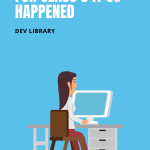Class 8 English Chapter 2 My Native Land Solution – ইংৰাজী, All subjects are available on our website for your convenience, you can provide all the material in PDF format as well as you can download the button for all classes with one click.
Class 8 English Chapter – 2 My Native Land
The SCERT book is recommended by education experts and teachers to help students prepare for all subjects to help the CBSE class. SCERT books are primarily used by students preparing for their civil service exams and students preparing for UPSC, APSC, and other state civil service exams.
My Native Land
Lesson – 2
1) Read the poem and answer the questions that follow :
(a) What does the old man ask the poet ?
Ans:- What is “my land is like ” the old man asks the poet.
(b) Why does the old man ask the question to the poet ?
Ans:- Because the old man wants to know about his native land.
(c) How does the poet address the old man ? What does that form of address mean ?
Ans:- The poet addressed the old man ‘Koka’. ‘Koka’ means grandfather.
(d) Why does the poet ask the old man to breathe deep?
Ans:- The poet asks the old man to breathe deep so he can feel the warm air that remained in his childhood.
(e) With what does the poet compare the cool breeze on the old man’s face ?
Ans:- The poet compares the cool breeze on the old man’s face with the peaceful breath of his land.
(f) With what does the poet compare the content gurgling of the little baby ?
Ans:- The poet compares the content gurgling of the little baby with the soil of the land.
(g) What does the chorus of the cuckoo and the sparrows do ?
Ans:- The chorus of the cuckoo and the sparrows shapes the old man’s native land.
(h) What are the things that create the soul of the poet’s beloved country ?
Ans:-The things that create the soul of the poet’s beloved country are, the roll of the Bihu Dhol, the Pepa and Gogona, the sweet smell of the Pitha and Laroo and the chant of the evening prayer in the Namghar, Masjid And Church.
2) A brief summary of each of the stanzas of the poem has been given below. Match the stanzas with the given summaries. Mention the stanza number alongside the correct summary.
a) My native land makes me feel as safe and secure as a baby carried on a mother’s back.
Ans :- Stanza – 4
b) The spirit of my native land can be understood in terms of its unity in diversity. Like different family members who have similarities and differences, yet belong to the same family and have the same home, in our native land, our family members practise different religions and traditions.
Ans:- Stanza – 6
c) The lonely, blind old man in the street asked me to describe our native land.
Ans:- Stanza – 1
d) Our native land is rich in its gift of nature and is brought to life by the birds and animals that playfully roam its rich green forests.
Ans:- Stanza – 5
e) The touch of our native land is as peaceful as the cool, fresh breeze blowing after a night of thunder and rain.
Ans:- Stanza – 3
3) Note that the poem is a series of information to a blind man on what his land is like. The girl provides the information by making use of the senses that are very strong in blind persons. These senses are :
a) touch
b) hearing
c) smell
(i) Find out the examples that the poet uses to make the old man feel what his land is like. Here is an example : the warm air.
Ans:- The cool breeze.
(ii) Find out the examples that the poet uses to make the old man hear the sounds to understand what his land is like.
Ans:- The examples that the poet uses to make the old man hear the sounds to understand what his land is like are:- The gurgling of the baby.
the chorus of the cuckoo and the sparrows.
The roll of the Bihu dhol, the Pepa and Gogona.
And the evening prayer of Namghar, Masjid And Church.
(iii) Find out the examples that the poet uses to make the old man smell what his land is like.
Ans:- The sweet smell of the Pitha and Laroo.
(iv) Was the old man able to guess the season when the poet described what his land was like ?
Ans:- Yes, the old man was able to understand that it was spring.
4) Here are some words from the poem. Match the words in column A with their meanings in column B:
| A | B |
| Thunder | satisfied |
| morn | The happy sound made by babies |
| contented | strong pleasant smell |
| gurgling | The loud explosive sound that follows lightning in the clouds |
| chorus | Strong and firm |
| aroma | Singing or speaking at the same time |
| sturdy | morning |
Ans:-
| A | B |
| Thunder | the loud explosive sound that follows lightning in the clouds. |
| morn | morning. |
| contented | satisfied. |
| gurgling | the happy sound made by babies. |
| chorus | singing or speaking at the same time. |
| aroma | strong pleasant smell. |
| sturdy | strong and firm. |
Now make sentences of your own using the words.
a) Thunder :- Rima is afraid of thunder and lightning.
b) Morn :- She runs in the early morning.
c) Contented :- He is content with what he gets.
d) Gurgling :- The gurgling sound of the baby feels sweet.
e) Chorus :- They sang a chorus song.
f) Aroma :- The aroma of the perfume is awesome.
g) Sturdy :- He has a sturdy mind.
5) (a) Practise pronouncing the following pairs of words. Then recite the poem with correct pronunciation.
| (i) sturdy – study |
| (ii) breathe – breed |
| (iii) warm – worm |
| (iv) rain – ran |
| (v) than – then |
| (vi) church – search |
| (vii) deep – dip |
| (viii) land – lend |
(b) Here are a few more sentences for practice. Practise saying these sentences after your teacher.
i) The sturdy boys study hard.
ii) The worms come out when the weather is warm.
iii) Then and then do not mean the same.
iv) They lend me their plough to till the land.
v) People search for peace in the church.
vi) She ran in the rain, laughing in joy.
vii) The river is too deep to take a dip.
6) In the poem you will find the poet referring to three musical instruments that are used in the husori programmes of Bihu.
a) Dhul :- A drum made especially for the Bihu festival and hence called the Bihu dhol or Bihu drum.
b) Pepa :- A type of pipe made out of buffalo horn played during husori.
c) Gogona :- A type of stringed musical instrument belonging to the harp family.
( There are many more musical instruments used in husori performances. Find more about them and write down the words naming the instruments and their meanings. Draw their diagrams as above and write a small paragraph of about six lines on the musical instruments that are used in the Bihu festival. )
Ans:- (i) Sutuli :- Sutuli is a clay – baked wind instrument. This half – moon – shaped musical instrument falls under the category of susira vadya of indian musical instruments. Sutuli, an indigenous folk instrument, draws inspiration from nature. It emulates the sound of a bird – Kuli in Assamese or more popularly known as Koel in hindi.
Bihu Taal:- The brass cymbals Bihu Taal is one of the five types of taal Vadya found in Assam and is largely used in Bihu Geet. Taal Vadya in Assam is widely used in classical as well as many folk music of assam.
7) Write a letter to your friend inviting him/her to your house during the Rongali Bihu holiday. Include in your letter what special food items will be made, what rituals will be followed and so on.
Ans :- P.S.V. High School.
12/12/2012
My dear Ritu
Hii dear, friend. I hope you and your family are doing well. I am also fine. I am writing this letter to remind and invite you and your family to come to my house. We all celebrate this Bihu together. We will also perform the rites and rituals of the “Bapoti Sahon” Bihu. We all will eat pitha and dance together and celebrate.
Don’t say ‘no’ . Do come as early as possible. With heartiest love and good wishes –
Your loving friend
Nihal
Ritu Das
Mangaldai Govt.
H.S. School
P.O. :- Mangaldai
Dist :- Darrang, Assam
Pin :- 784125
8) (a) (i) Your teacher will read aloud a passage about an American tourist. Listen to it carefully. As you listen, fill in the gaps in the passage below :
The …………………………….. Mela is a ……………………. day community fair held by the ……………………… community in …………………………….. at Jonbeel in Morigaon district over the weekend of the ………………………… Bihu. It is a fair in Morigaon, Assam organized by the ……………………….. Community. The American tourist ……………………….. Gordon was delighted to know about Assam. He had heard of………………………… and the rhinoceros. He wanted to visit the river island ………………………….. . He was in time to celebrate ………………………… Bihu.
Ans:- The Jonbeel Mela is a three day community fair held by the Tiwa community in Dayang Belguri at Jonbeel in Morigaon district over the weekend of the Magh Bihu. It is a fair in Morigaon, Assam organised by the Tiwa Community. The American tourist Jim Gordon was delighted to know about Assam. He had heard of Kaziranga and the rhinoceros. He wanted to visit the river island Majuli . He was in time to celebrate Magh Bihu.
ii) Answer the questions below by recalling the information from the passage read out by your teacher :
a) What was the name of the American tourist ?
Ans:- Jim Gordon.
b) Where did the author meet him ?
Ans:- At the Park Hotel in Kolkata.
c) What was the name of the author’s travel agency?
Ans:- Garuda Travels.
d) Which places in Assam was the tourist keen to visit ?
Ans:- Kaziranga and Majuli.
e) In which month was the tourist in Kolkata ?
Ans:- January.
(b) Now read the first passage at page 112 individually and in groups and write a dialogue between the tourist and the author. Use the information and enact it in the form of a role play before the class. You can add additional information to make the role play more interesting. The role play must begin with a proper introduction between the author and the tourist.
Ans:- The author :- Hi ! I am from Garuda Travels, Assam. My business is to help the tourists to visit Assam.
J. Gordon :- Hi ! I am Jim Gordon from America. Nice to meet you. I want to visit Kaziranga and see Rhino and also Majuli in Assam.
The author :- You can also visit some other places including wildlife sanctuaries. You can also enjoy Magh Bihu and also see the Jonbeel Mela in Morigaon.
J. Gordon :- Ok. Thanks a lot.
9) The poem ‘My Native Land’ refers to the “chorus of cuckoos and sparrows” . The English language has a variety of words to denote the sounds made by birds and animals. For example cuckoos ‘coo’ and sparrows ‘chirp’ . These words are called onomatopoeic words because they sound similar to the actual sounds. Look at the onomatopoeic words in the box given below. Match them correctly with the pictures of the birds and animals given here.
Ans:-
| Cow – Moo. Owl – Hoot. Hen – Cluck. Lamb – Bleat. Parrot – Screech. Pigeon – Coo. Crow – Caw. Snake – Hiss. |

Hi, I’m Dev Kirtonia, Founder & CEO of Dev Library. A website that provides all SCERT, NCERT 3 to 12, and BA, B.com, B.Sc, and Computer Science with Post Graduate Notes & Suggestions, Novel, eBooks, Biography, Quotes, Study Materials, and more.






Mor 12 bombarded laga 2 bombarded ceptar